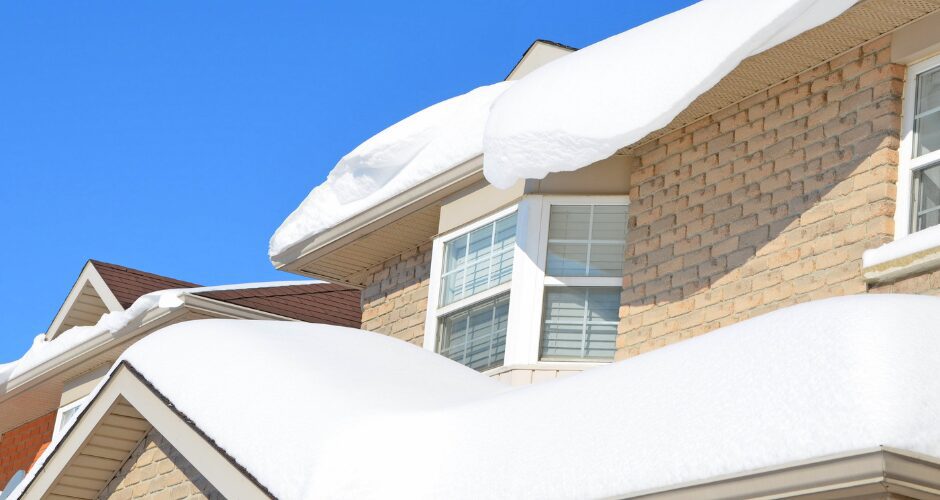
Howdy, y’all! Whether you’re living in McKinney, Allen, or Prosper, you know how unpredictable Texas weather can be. One week it’s blazing hot, the next we’re dealing with hail or flash floods. Your roof and gutters take the brunt of that punishment — and keeping them weather-ready is key to protecting your home and wallet.
This guide walks you through everything a Texas homeowner needs to know about weather-proofing: inspections, maintenance, repair tips, upgrades, and a printable checklist to keep things simple.
Why Roof & Gutter Weather-Proofing Matters
Your roof defends your home from rain, wind, and sun. Your gutters carry that rain safely away. Together, they protect your attic, insulation, and foundation.
When either system fails, water sneaks in where it shouldn’t — leading to mold, rot, and costly repairs.
Texas-Specific Roof Challenges
-
Extreme Heat: UV rays dry out shingles, making them brittle.
-
Hail & High Winds: Storms can tear off shingles or dent flashing.
-
Heavy Rain & Flooding: Poor drainage puts pressure on foundations.
-
Clay Soil Movement: Water pooling near the home can cause foundation cracks.
-
Tree Debris: Oak and pecan trees drop leaves and limbs that clog gutters fast.
💡 Pro Tip: Regular roof inspections can prevent up to 80% of leak-related damage before it starts (National Roofing Contractors Association).
Common Roof & Gutter Problems
Roof Issues
-
Cracked or Missing Shingles – A common issue after Texas hailstorms.
-
Worn Granules – Bald spots mean your shingles can’t shed water properly.
-
Damaged Flashing – Rust or loose flashing allows leaks around chimneys and vents.
-
Poor Ventilation – Leads to heat buildup and moisture in the attic.
-
Sagging or Soft Spots – Indicates water damage below the surface.
Gutter Issues
-
Clogging – Leaves and twigs block the flow, causing water to overflow.
-
Leaky Joints – Small cracks or holes create water trails down the siding.
-
Pulling Away – Improper slope prevents drainage and strains fascia boards.
-
Downspouts Too Short – Water pools near the foundation, softening the soil.
-
Lack of Guards – Debris buildup means constant cleanings.
Ignoring these problems can turn a $200 fix into a $5,000 repair.
The Texas Weather-Proofing Routine
We recommend inspecting and maintaining your roof and gutters twice a year — once before storm season (spring) and again before winter rains (fall).
Step 1: Inspect
Roof:
- Walk your property and visually inspect the roof for missing, curled, or discolored shingles.
- Check flashing around chimneys, skylights, and vents for cracks or rust.
- Look in the attic for damp spots, daylight peeking through, or mold growth.
- Check for shingle granules in gutters — a sign of aging shingles.
Gutters:
- Ensure they’re firmly attached with no sagging sections.
- Scoop out debris and flush with a garden hose.
- Verify water flows toward downspouts without backup.
- Confirm downspouts direct water 3–6 ft away from the foundation.
(Schedule Your Free Roof Inspection)
Step 2: Clean, Seal & Repair
Roof Repairs
-
Replace cracked or missing shingles promptly.
-
Use roofing cement to seal small flashing cracks or exposed nail heads.
-
Remove branches, moss, and debris that hold moisture.
-
Ensure vents are unobstructed for proper airflow.
Gutter Repairs
-
Reseal seams and leaks using high-quality gutter caulk.
-
Tighten loose hangers and brackets.
-
Add extensions or splash blocks at downspouts.
-
Upgrade to seamless aluminum gutters if rust or leaks persist.
-
Consider gutter guards to reduce seasonal cleanings.
Foundation Care
Regrade the soil so water flows away from your home. Standing water near your slab foundation can cause costly shifting or cracks. (Texas A&M Agrilife Extension: Managing Home Drainage)
Step 3: Seasonal Roof & Gutter Plan
🌸 Spring – Post-Storm Recovery
-
Inspect for hail or wind damage.
-
Clean out gutters and check for leaks.
-
Trim overhanging branches.
-
Check attic insulation for dampness.
☀️ Summer – Heat Defense
-
Look for curled or blistered shingles.
-
Inspect attic ventilation.
-
Repaint rusted flashing or metal roofs.
-
Ensure gutters can handle sudden summer downpours.
🍂 Fall – Storm Prep
-
Clear fallen leaves from gutters (twice if necessary).
-
Reseal flashing and caulk.
-
Check valleys and roof edges for trapped debris.
-
Test drainage away from your foundation.
❄️ Winter – Mild but Important
-
Check for ice buildup after freezes.
-
Inspect for leaks or water stains on ceilings.
-
Make a note to schedule your spring roof inspection.
Step 4: Know When to Call a Pro
Even the best DIYer can’t handle every roofing problem safely. Call a certified roofer if you notice:
-
Large patches of missing shingles.
-
Gutters pulling off fascia boards.
-
Leaks inside your attic or ceiling stains.
-
Granule loss across large areas.
-
Sagging roof sections or visible wood rot.
(Contact Our Roofing Experts in McKinney)
Professional roofers can spot hidden issues, document storm damage for insurance claims, and recommend long-term solutions like upgraded underlayment or Class 4 impact-resistant shingles.
The Ultimate Texas Roof & Gutter Checklist
Roof
-
Inspect visually every spring/fall
-
Replace damaged or missing shingles
-
Seal exposed nails and flashing cracks
-
Clean valleys and remove debris
-
Check the attic for leaks, stains, or mold
-
Confirm vents are unobstructed
-
After storms, inspect for hail or lifted shingles
Gutters & Drainage
-
Clean at least twice yearly
-
Flush with hose to test flow
-
Reseal seams, patch holes
-
Ensure correct slope toward downspouts
-
Extend downspouts 3–6 ft away from foundation
-
Replace sagging or rusted sections
-
Consider installing gutter guards
Yard & Foundation
-
Grade the soil to drain away from home
-
Trim overhanging trees
-
Check sprinklers — aim away from foundation
-
Watch for pooling after rain
-
Add French drains if necessary
Storm Preparedness
-
Keep tarps, sealant, gloves, and ladder ready
-
Save your roofer’s contact in your phone
-
Document any storm damage with photos
-
Review home insurance coverage annually
Smart Homeowner Upgrades
-
Class 4 Impact-Resistant Shingles
– Proven protection from hail and often lowers insurance premiums. -
Seamless Gutters
– Fewer joints = fewer leaks. Great for heavy rainfall zones. -
6-Inch Gutters
– Handle 40% more water than standard 5-inch models. -
Gutter Guards
– Keeps debris out and cuts cleaning time. -
Metal Roofing
– Reflects sunlight, saving on energy bills while standing up to Texas heat. -
Drip Edge Flashing
– Prevents water intrusion under shingles and fascia rot. -
Attic Insulation & Ventilation Upgrade
– Keeps attic cooler, extends roof life. -
Underground Drain Lines
– Move runoff farther from your foundation for ultimate protection.
(Learn About Class 4 Shingle Upgrades)
Roof & Gutter Safety Tips
-
Always work with a partner when on ladders.
-
Avoid roof work during or right after rain.
-
Use non-slip shoes and gloves.
-
Stay hydrated — Texas heat can sneak up on you.
-
If your roof is steep or two-story, hire a pro.
⚠️ Safety Note: A minor slip on a roof can lead to major injury. It’s never worth the risk — call your local roofer.
Wrapping It Up – Texas Style
Think of roof and gutter weather-proofing like maintaining your truck — you change the oil regularly, right? The same goes for your home. Regular inspections and cleaning keep everything running smooth and strong.
Follow this schedule:
-
Inspect twice a year
-
Clean gutters every 6 months
-
Trim trees annually
-
Hire a professional every 1–2 years
With a little consistency (and a dash of Texas pride), your roof and gutters will stand strong through every season — from scorching July heat to spring thunderstorms.
When you’re ready for expert help, schedule your free inspection today with our team of local roofing pros. We’ll make sure your home stays safe, dry, and beautiful — rain or shine.

